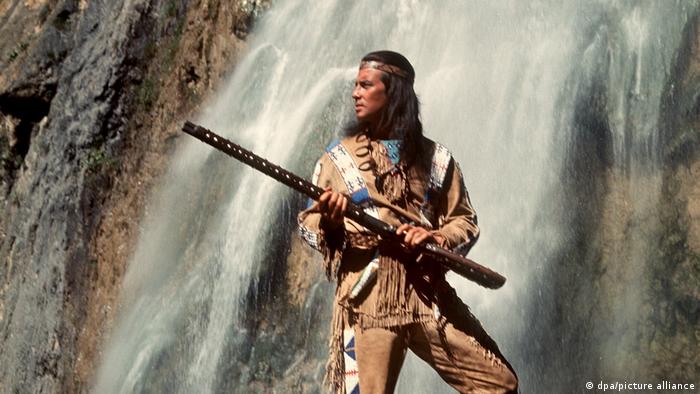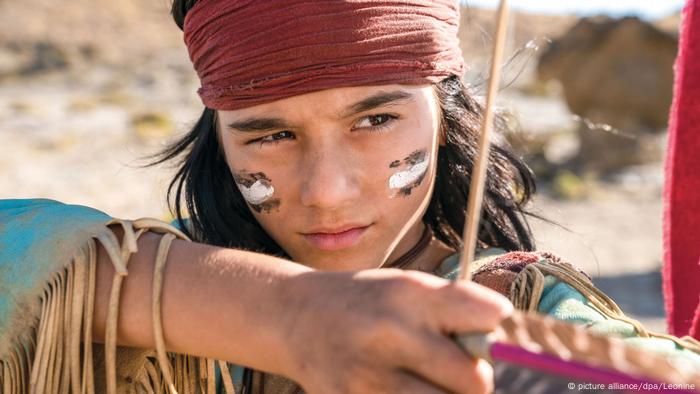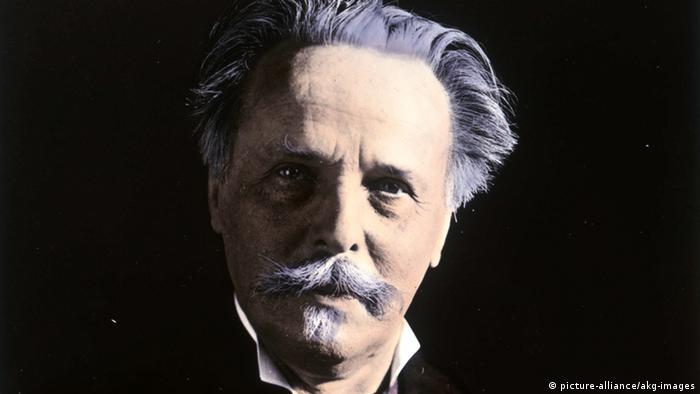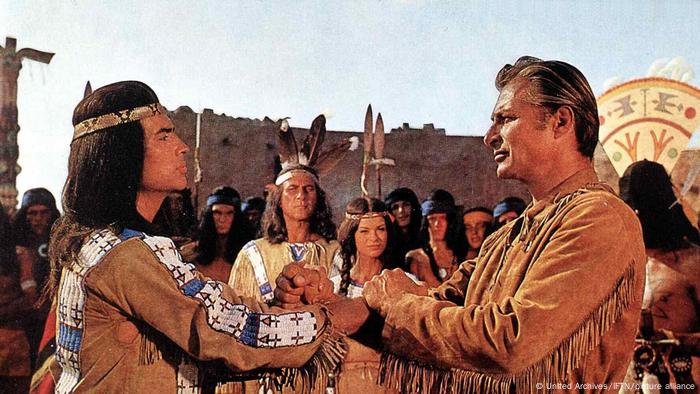Publisher's withdrawal of Winnetou books stirs outrage in Germany
Germany wrestles with the legacy of author Karl May, whose fictional Native American hero, Winnetou, embodies the Germans' love affair with the Wild West.

The Winnetou films from the 1960s revived the popularity of the tales
Another day, another online outrage over "cancel culture." German Twitter lit up with instant indignation this week after a German publisher announced it was pulling two children's books from its line-up amid accusations of racism and cultural appropriation.
Both books were inspired by Wild West stories from the wildly popular, and increasingly controversial, 19th-century German writer Karl May.
The books imagine the childhood of May's most famous creation: the fearless Apache brave Winnetou, a fictional Native America chief who made his first appearance in 1875 and whose adventures have been retold in numerous novels — May's books have sold around 200 million copies worldwide — as well as in several movies and even an animated series.
The new titles were to accompany the release of "The Young Chief Winnetou," which hit German theaters August 11. Now there are calls to pull the film as well.

The recently released 'The Young Chief Winnetou' is also criticized for
romanticizing North America's genocidal colonial era
The publisher, Ravensburger Verlag, citing "lots of negative feedback" around the "romanticized" and "clichéd" depiction of Native Americans in the books, dropped the titles from its program and apologized if it had hurt anyone's feelings.
The blowback was quick, and predictable. #Winnetou has been a trending topic online since with the majority of posters furious over what German tabloid Bild, with characteristic restraint, termed the "woke hysteria" that was "burning the hero of our childhood at the stake".
Germany's Wild West obsession
Behind the online fury lies a very real, and particularly German, love affair with the Wild West, an affection that can be traced directly back to Karl May and his idealized depiction of 19th-century America.
May's characters — the noble, heroic Winnetou and his white-skinned "blood brother" Old Shatterhand, a German immigrant land surveyor — are as present in the German popular imagination as the figures in Grimm's Fairy Tales.
You'll find Winnetou books and records in many German households. A series of Winnetou films made during the 1960s are still staples on German TV. There are Karl May-inspired Wild West festivals and theme parks across the county where families gather to dress up as cowboys and Indians on stage sets of saloons and hitching posts. The most popular, in Bad Segeberg, attracts about 250,000 people a year.
That, for many, is the problem. Critics say May's vision of Native American culture, as a sort of prelapsarian utopia, is little more than a convenient fiction that ignores the nastier truths about the genocide of Indigenous people by white settlers.
In the broader discussion around cultural appropriation and who has the right to tell which stories, it doesn't help May's case that he was a white man writing about a culture of which he had no first-hand knowledge.
May only visited America once, after he was already a successful novelist, and didn't get further west than New York.

KARL MAY, CREATOR OF WINNETOU
Germany's first best-selling author
This pictures dates from 1910, at the height of Karl May's success. The author wrote 70 books, which sold more than 200 million copies worldwide. At the beginning of the 20th century, his characters were as famous as J.K. Rowling's Harry Potter or Luke Skywalker from "Star Wars." May's stories accompanied generations of young Germans on fantastic journeys to distant worlds.
12345678910
The Winnetou films, including the most recent, all feature white actors in the Indigenous roles. The most famous Winnetou is Pierre Brice, a white Frenchman who played the Apache chef in nearly a dozen films from 1962-68 as well as in a TV series in the 1980s.
The 'noble savage' stereotype
At its core, the criticism of May and Winnetou, and the reason Ravensburger pulled its books from the shelves, is that the books and their characters are retreads of the old "noble savage" stereotype.
May's Natives are not real people, the argument goes, but idealized, near-magical figures whose main role is to sacrifice themselves for the benefit of the white protagonist.
There's definitely some truth to that. Winnetou is more superhero than flesh-and-blood character, and, oddly sexless (though some readers detect a strong homoerotic vibe in the "brotherly love" between the Apache an Old Shatterhand).

Blood brothers: Pierre Brice in the role of Winnetou and Lex Barker
as Old Shatterhand in a film from 1963
But labeling May and his imaginary America as racist and imperialist ignores how radical, for its time, Winnetou was. A century before Kevin Costner's 1990 epic Western film "Dances with Wolves," Karl May flipped the traditional depiction of "wild Indians" and "civilized cowboys," portraying Indigenous Americans (at least Winnetou and his friends) as the heroes, and white settlers mainly as the villains.
German society does not lack for racism but, thanks in large part to Karl May, Native Americans are held in near-universal regard, even if the image the average German has of Indigenous people bears little relation to reality.
In his 2020 book "Indianthusiasm," historian and Indigenous studies scholar Hartmut Lutz, a sharp critic of Karl May, admits the author's escapist fantasies have also spurred interest in Indigenous culture and inspired generations of German academics to find out the truth behind the tales.
In the meantime, anyone who wants real insight into Indigenous life and imagination should check out "Reservation Dogs," the hilarious series on Hulu about teens growing up on a Native reservation in Oklahoma, that features all Indigenous writers and directors, as well as an almost entirely Indigenous cast. Or watch "Night Raiders" from Canadian filmmaker Danis Goulet (Cree/Metis), which uses the metaphor of dystopian sci-fi to address the traumatic legacy of Canada's residential school system.
Looking to Karl May and Winnetou expecting an authentic picture of Native experience is like reading Hansel and Gretel for tips on child rearing.
Edited by: Elizabeth Grenier
NOT UNLIKE
Pearl Zane Grey (January 31, 1872 – October 23, 1939) was an American author and dentist. He is known for his popular adventure novels and stories associated with the Western genre in literature and the arts; he idealized the American frontier. Riders of the Purple Sage (1912) was his best-selling book.
In addition to the success of his printed works, his books have second lives and continuing influence adapted for films and television. His novels and short stories were adapted into 112 films, two television episodes, and a television series, Dick Powell's Zane Grey Theatre.
No comments:
Post a Comment